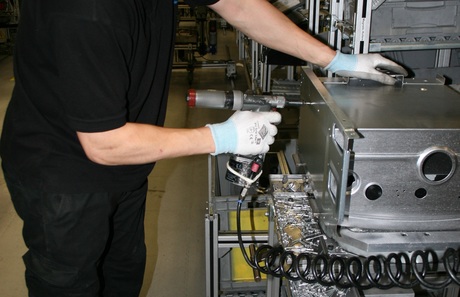Air tools leaving industry open to hand-arm vibration claims

Calibration services company Trescal has warned badly maintained air tools which cause hand-arm vibration are leaving industries open to the risk of worker injuries and possible litigation.
The UK company specialising in air tool testing said it has issued the warning in response to increased concerns that British industry in particular is failing to take the air tool vibration threat seriously.
“I know of major companies with multiple damages cases currently running that could easily result in significant payouts, upwards of £30,000, for the employees concerned,” Trescal UK Air Tooling Programme Manager John Buckley said.
He said the lack of understanding about air tool vibration issues and the need for maintenance, calibration and HAV testing is acute across all levels of industry.
“The problem goes from the largest to the smallest engineering companies. Industry has to realise that it has a duty of care towards air tool users and that if the health and safety executive conduct an audit, which finds that there is no record of air tool testing, then it is likely a prosecution will follow,” said Buckley.
According to Safe Work Australia, occupational exposure to hazardous levels of vibration is associated with a range of adverse health outcomes including vibration white finger, carpal tunnel syndrome, and musculoskeletal and neurological disorders.
The UK’s Control of Vibration at Work Regulations 2005 introduced limits values for hand-arm and whole-body vibration. The exposure limits under the regulations require employers to put in place organisational measures to protect the health and safety of their employees.
While no Australian jurisdiction currently has specific vibration regulations, Safe Work Australia did recently release workplace vibration guidance material (which also includes links to publications material under the UK regulation) to provide technical information to industry on how exposures are to be measured and calculated.
Buckley said air tools, such as nut runners, engravers and hammer drills, may not be identified as sophisticated pieces of equipment, but they do need servicing, HAV testing and in many cases calibrating.
“If the shaft of an air tool is bent, the bearings haven’t been cleaned or there is condensation in the airline — which can lead to rust build-up in the tool — there is a potential for increased vibration exposure and therefore a risk of physical damage to employees,” he said.
“My advice to industry is to consult with an independent and accredited calibration provider, such as Trescal, to give peace of mind and assurance that all air tools are being serviced in accordance with national standards. It is essential that air tools need to be serviced, HAV tested, calibrated to the OEM specification at least until there is 12 months of data on tool usage which can be analysed.”
Buckley added: “I would recommend that the air tool is stripped down, cleaned and key components are replaced, if necessary. This service can be provided efficiently to meet the demands of the customer operations, and if you use a Trescal mobile air tool calibration service, which provides customers with national coverage from several locations, the entire service and repair procedure can be completed on-site with no disruption to production.”
For further information, go to: www.safeworkaustralia.gov.au/sites/swa/about/publications/pages/vibration.
Providing mental health support to young workers
Mental health is one of the leading reasons young workers do not finish their apprenticeships...
New psychology division supports organisational compliance
In recognition of the need to protect workers from psychosocial hazards in the workplace, Rehab...
Roof plumber dies after five-metre fall
The death of a 71-year-old roof plumber in October is currently being investigated by WorkSafe WA.







